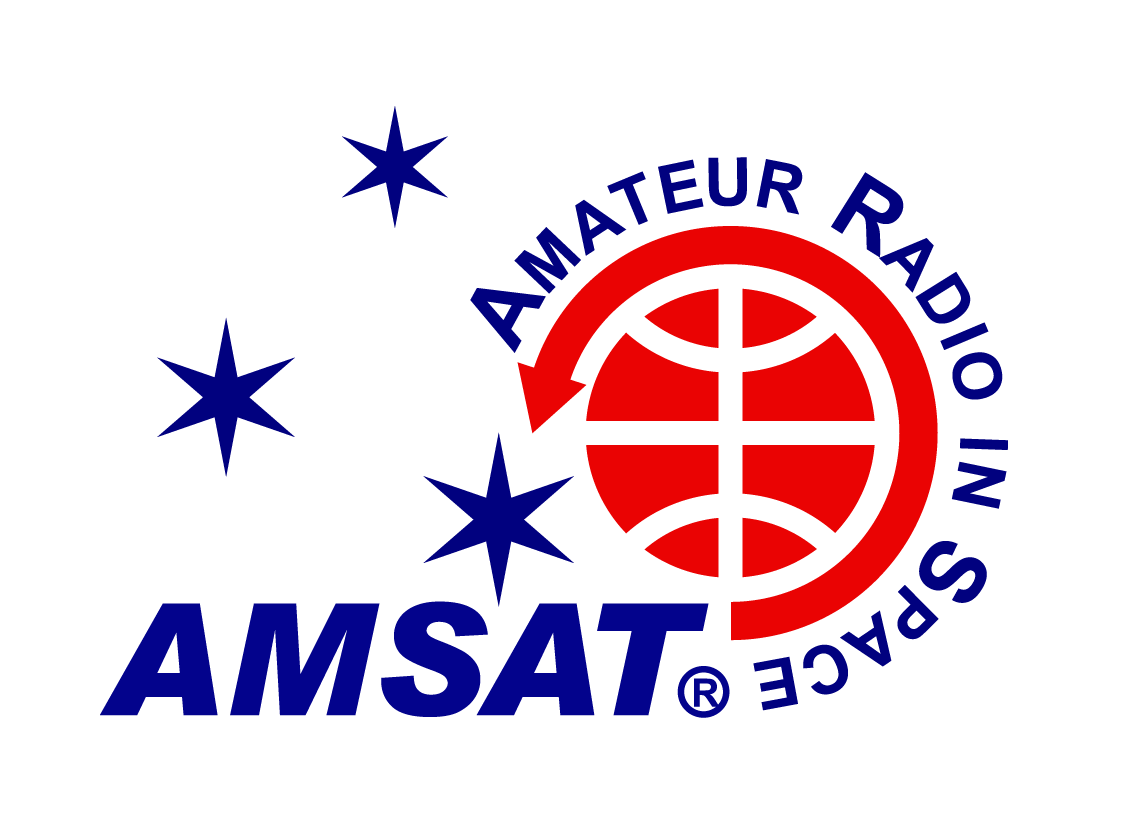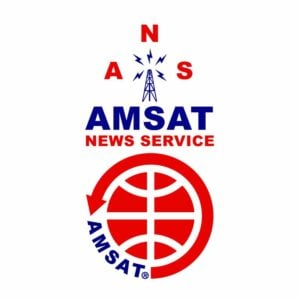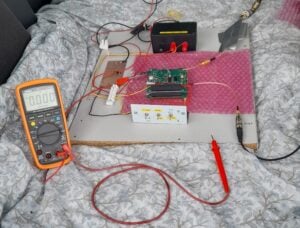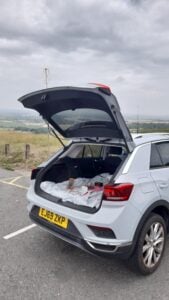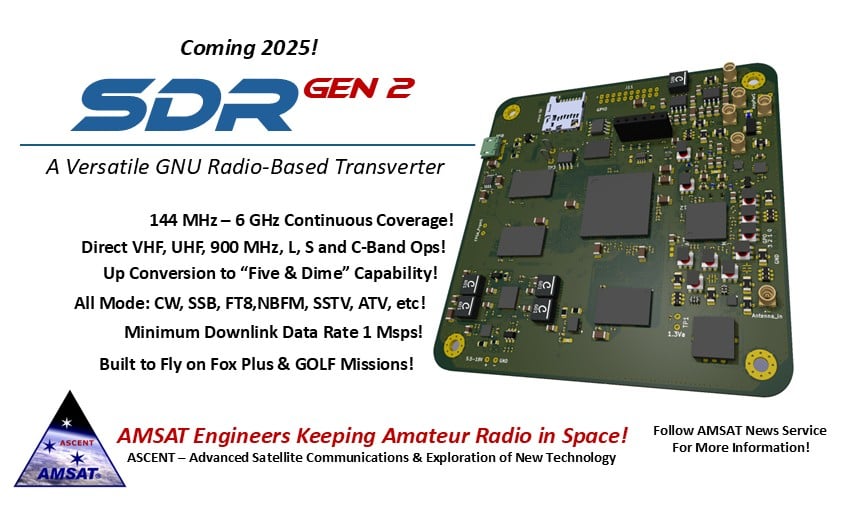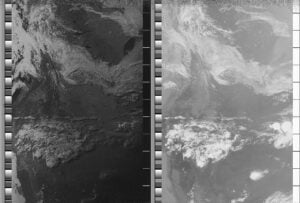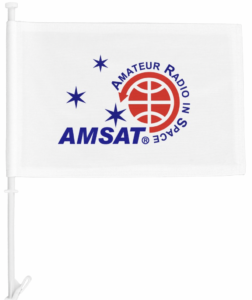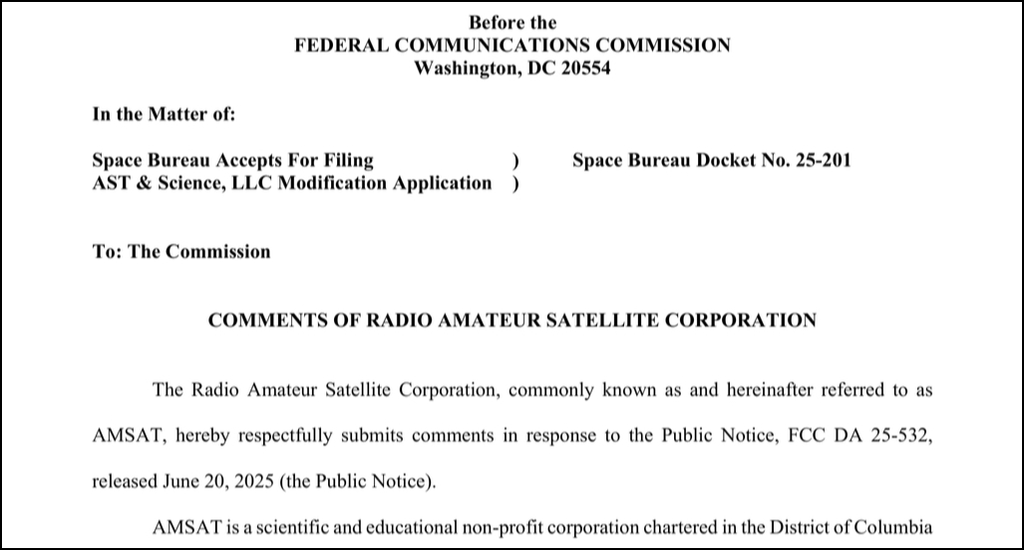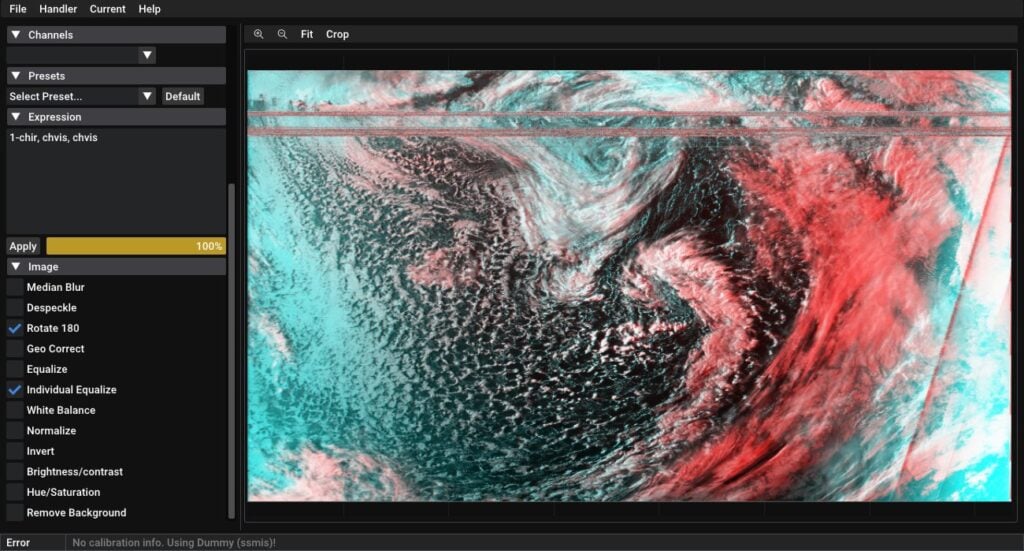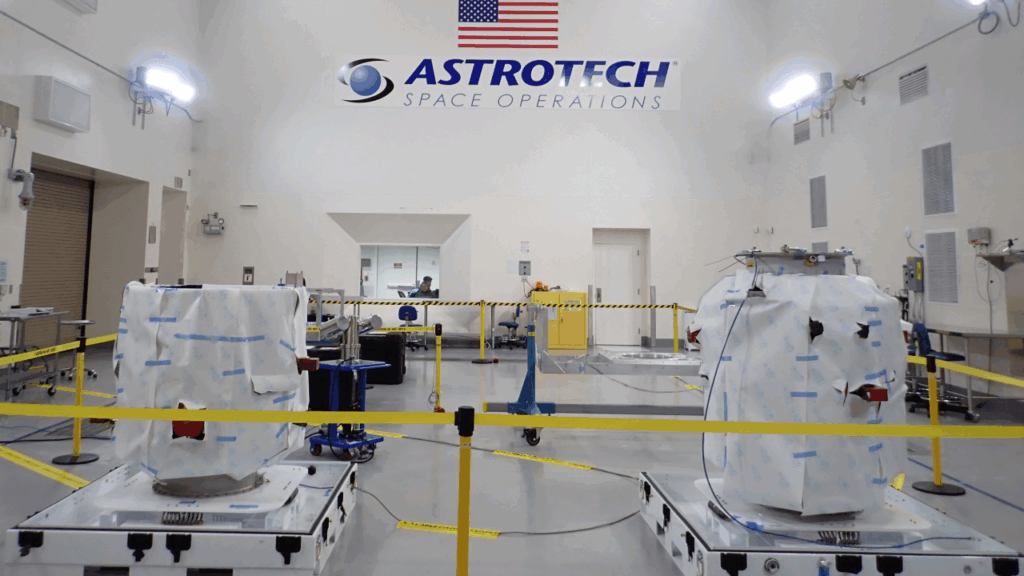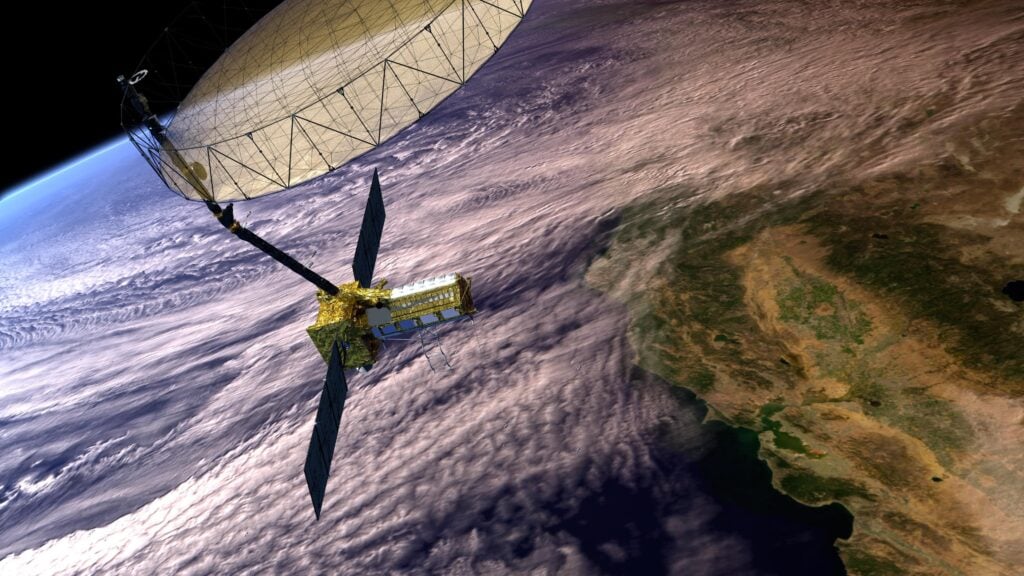In this edition:
* NASA Curtails CSLI Program – GOLF Launches Cut
* 2025 AMSAT Symposium Keynote Speaker Announced
* AMSAT Symposium Call for Papers & Presentations
* Symposium Hotel Rooms Added
* NASA’s Lunar Trailblazer Mission Ends in Disappointment
* Changes to AMSAT-NA TLE Distribution
* ISS Crew Expands to Eleven
* ARISS News
* AMSAT Ambassador Activities
* Satellite Shorts From All Over
The AMSAT News Service bulletins are a free, weekly news and information service of AMSAT, the Radio Amateur Satellite Corporation. ANS publishes news related to Amateur Radio in Space including reports on the activities of a worldwide group of Amateur Radio operators who share an active interest in designing, building, launching and communicating through analog and digital Amateur Radio satellites.
The news feed on http://www.amsat.org publishes news of Amateur Radio in Space as soon as our volunteers can post it.
Please send any amateur satellite news or reports to: ans-editor [at] amsat.org
Sign up for free e-mail delivery of the AMSAT News Service Bulletins via the ANS List; to join this list see: https://mailman.amsat.org/postorius/lists/ans.amsat.org/
NASA Curtails CSLI Program – GOLF Launches Cut
Jerry Buxton, NØJY, AMSAT VP-Engineering received letters from NASA dated July 12, 2025 announcing changes to the CubeSat Launch Initiative (CSLI) program.
The letters stated, in part, that as a result of the President’s proposed Fiscal Year 2026 budget, the reduction and realignment of personnel, NASA has fewer resources available to maintain the program as it is currently operating.
Based on these program uncertainties, NASA said they have made the difficult decision to discontinue its cooperative work on those missions where launch services have not been manifested. AMSAT’s GOLF-TEE and the GOLF-1 missions are among those that have not been manifested, meaning they have not yet been scheduled for a particular launch.
As such, NASA said they will not be able to provide launch opportunities for either of the GOLF missions and there is no expectation that circumstances will change.
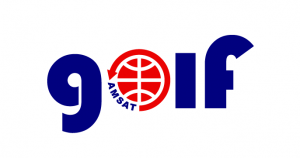
Upon receiving this news, Buxton brought the matter to the attention of the AMSAT Board of Directors and its Executive Committee who met on August 5th.
The Board of Directors and committee members unanimously supported continuation of the final development of the GOLF-TEE mission which is expected to be flight-ready in 2026.
Knowing that being accepted to the CSLI program does not actually guarantee a government funded launch, AMSAT engineering and operations officials have maintained long-standing relationships with private integrators and launch services. In past years it might have taken years to schedule a ride on a non-government launch. But, in today’s competitive market among commercial integrators and launch services, rides for CubeSats can be secured in a matter of months.
The Board of Directors and Executive Committee were emphatic that, despite the loss of a government funded launch, the GOLF-TEE mission should be completed on schedule and will be launched with the resources on hand.
Still, the final chapter on this development has not been written. NASA states that the CSLI Panel is planning to reconvene in the Spring of 2026 to reassess program challenges and opportunities.
In concluding his report, Buxton noted that changes in the CSLI program do not affect the timetable for the Fox-Plus satellites since they were never considered for the CSLI program.
The AMSAT Board of Directors will take further action to ensure the timely launch of its satellite projects at its annual Board of Directors meeting on October 16-17 immediately prior to the AMSAT 43rd Annual Space Symposium and Annual General Meeting being held in Phoenix, Arizona.
[ANS thank Jerry Buxton, NØJY, AMSAT VP-Engineering, for the above information.]
Your 2025 AMSAT President’s Club Coin Is Waiting!
Celebrating the 40th Anniversary of Amateur Radio on Human Spaceflight
Help Support GOLF and Fox Plus.

Join the AMSAT President’s Club today and help
Keep Amateur Radio in Space!
https://www.amsat.org/join-the-amsat-presidents-club/
2025 AMSAT Symposium Keynote Speaker Announced
AMSAT has announced that Liam Cheney, an aerospace consultant and founder of Footstep Aerospace by AG3, LLC will be the keynote speaker at the 43rd Annual AMSAT Space Symposium and Annual General Meeting to be held on October 16-19, 2025 in Phoenix, Arizona.

Liam Cheney (Photo: Footstep Aerospace)
In his capacity as an aerospace consultant Mr. Cheney supports mission integration, strategy, and business development for the space industry.
Over the past decade, he has contributed to the successful launch and deployment of numerous CubeSat missions, including many flown through NASA’s CubeSat Launch Initiative (CSLI), where he previously served as a Mission Manager. He has helped launch multiple AMSAT-supported missions during his time at NASA, Tyvak, and SRI International. Liam also served as the launch services Mission Manager for PREFIRE, which launched in 2024 on back-to-back Rocket Lab Electron flights to study polar heat loss and improve climate modeling.
He holds a Master’s degree in Aerospace Engineering from Cal Poly, San Luis Obispo, where he authored a thesis on safety standards for CubeSat propulsion systems and contributed to the university’s CubeSat Program. Liam is a certified Project Management Professional and a member of AMSAT. He lives in Kansas City with his wife and two children and enjoys astrophotography and craft coffee.
Information on Symposium registration and hotel reservations can be found at:
https://www.amsat.org/43rd-amsat-space-symposium-and-annual-general-meeting/
[ANS thanks AMSAT for the above information.]
Need new satellite antennas?

Purchase M2 LEO-Packs from the AMSAT Store.
When you purchase through AMSAT, a portion of the proceeds goes towards
Keeping Amateur Radio in Space.
https://amsat.org/product-category/hardware/
AMSAT Symposium Call for Papers & Presentations
Registrations & room reservations are now available for the 43rd Annual AMSAT Space Symposium & Annual General Meeting to be held Thursday, October 16 to Sunday, October 19 at the Holiday Inn & Suites Phoenix Airport North, 1515 North 44th Street Phoenix, AZ.
Early Bird registration remains available until September 15 at https://launch.amsat.org/Events
Proposals for Symposium papers and presentations are invited on any topic of interest to the amateur satellite community. We request a tentative title of your paper or presentation as soon as possible, with final copy submitted by October 8th for inclusion in the Symposium Proceedings.
Proposals for presentations at the Symposium do not require a paper. Presentations will be recorded and made available on AMSAT’s YouTube Channel and transcribed and published with its slides in the Proceedings.
Proposals should be sent to Frank Karnauskas, N1UW via f.karnauskas [at] amsat.org
[ANS thanks AMSAT for the above information]
Symposium Hotel Rooms Added
If you tried to make a hotel reservation for the 2025 AMSAT symposium and found yourself left out – Good news – More rooms have been added!
Rooms for the 43rd AMSAT Annual Space Symposium and Annual General Meeting have been going fast but more are now available. At an affordable price of $140 per night plus tax, these rooms will go fast.
All rooms at the Holiday Inn and Suites Airport North are two-room suites with a choice of 1 King bed or 2 Queen beds.

Credit: Holiday Inn Suites Phoenix Airport North
In addition to a free airport shuttle and free parking, the hotel offers free Wi-Fi; a fitness area; an outdoor pool and hot tub in a large, lovely palm-shaded courtyard; and free hot breakfast for all guests! During the day, It’s a great setting for spouses to relax while you’re enjoying Symposium presentations. In the evening, it’s the perfect way to relax and enjoy a beverage or snack under the stars in Phoenix.
More information on room reservations can be found at:
https://www.amsat.org/43rd-amsat-space-symposium-and-annual-general-meeting/
[ANS thanks AMSAT for the above information.]
Want to fly the colors on your own grid expedition?
Get your AMSAT car flag and other neat stuff from our Zazzle store!
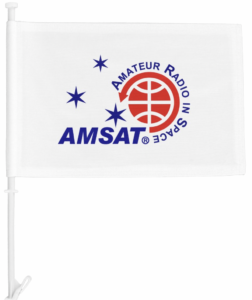
25% of the purchase price of each product goes towards
Keeping Amateur Radio in Space
https://www.zazzle.com/amsat_gear
NASA’s Lunar Trailblazer Mission Ends in Disappointment
The Lunar Trailblazer mission to the moon officially ended on July 31, but it wasn’t a complete journey. NASA said on August 4 that its teams lost contact with the satellite shortly after its launch on February 26.
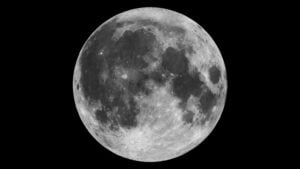 (Photo credit: NASA)
(Photo credit: NASA)
The NASA satellite was part of the IM-2 mission by Intuitive Machines, which launched from Kennedy Space Center. The Lunar Trailblazer successfully separated from the SpaceX Falcon 9 rocket as planned about 48 minutes after launch. Operators in Pasadena, CA established communication with the satellite, but two-way communication was lost the next day and the team was unable to recover the connection. From the limited data ground teams received before the satellite went dark, the craft’s solar arrays were not correctly positioned toward the sun, which caused its batteries to drain.
[ANS thanks Engadget for the above information. See the complete story at https://www.engadget.com/science/space/nasas-lunar-trailblazer-mission-ends-in-disappointment-201318932.html]
Changes to AMSAT-NA TLE Distribution for August 8
Two Line Elements or TLEs, often referred to as Keplerian elements or keps in the amateur community, are the inputs to the SGP4 standard mathematical model of spacecraft orbits used by most amateur tracking programs. Weekly updates are completely adequate for most amateur satellites. TLE bulletin files are updated daily in the first hour of the UTC day. New bulletin files will be posted immediately after reliable elements become available for new amateur satellites. More information may be found at https://www.amsat.org/keplerian-elements-resources/.
With HamTV becoming active on ISS, orbital elements are now updated twice daily at 00:18 and 12:18 UTC.
Assignments to some of the Tevel2 satellites have been updated to match object numbers.
The following satellites have been removed from this week’s distribution:
Foresail-1 NORAD Cat ID 52766 Decayed from orbit on or about 25 June 2025
[ANS thanks Joe Fitzgerald, KM1P, AMSAT Orbital Elements Manager for the above information]
AMSAT Remove Before Flight Key Tags Now Available
Yes, These are the Real Thing!
Your $20 Donation Goes to Help Fly a Fox-Plus Satellite
Includes First Class Postage (Sorry – U.S. Addresses Only)
Order Today at https://www.amsat.org/product/amsat-remove-before-flight-keychain
ISS Crew Expands to Eleven
Four new crew members are adjusting to life on the International Space Station and gearing up for several months of microgravity research to benefit humans living on and off the Earth. Meanwhile, another quartet that has been orbiting Earth since March is packing up and handing over responsibilities to the new crew before returning to Earth this week.
Expedition 73 expanded to eleven individuals on Saturday, August 2, when NASA’s SpaceX Crew-11 mission docked to the orbital outpost aboard the Dragon spacecraft after launching from Florida about 15 hours earlier. Crew 11’s Commander and Pilot, Zena Cardman, KJ5CMN, and Mike Fincke, KE5AIT, both from NASA, and Mission Specialists Kimiya Yui, KG5BPH, from JAXA (Japan Aerospace Exploration Agency) and Oleg Platonov from Roscosmos spent the weekend unpacking their Dragon spacecraft, reviewing safety procedures, and getting familiar with space station systems.
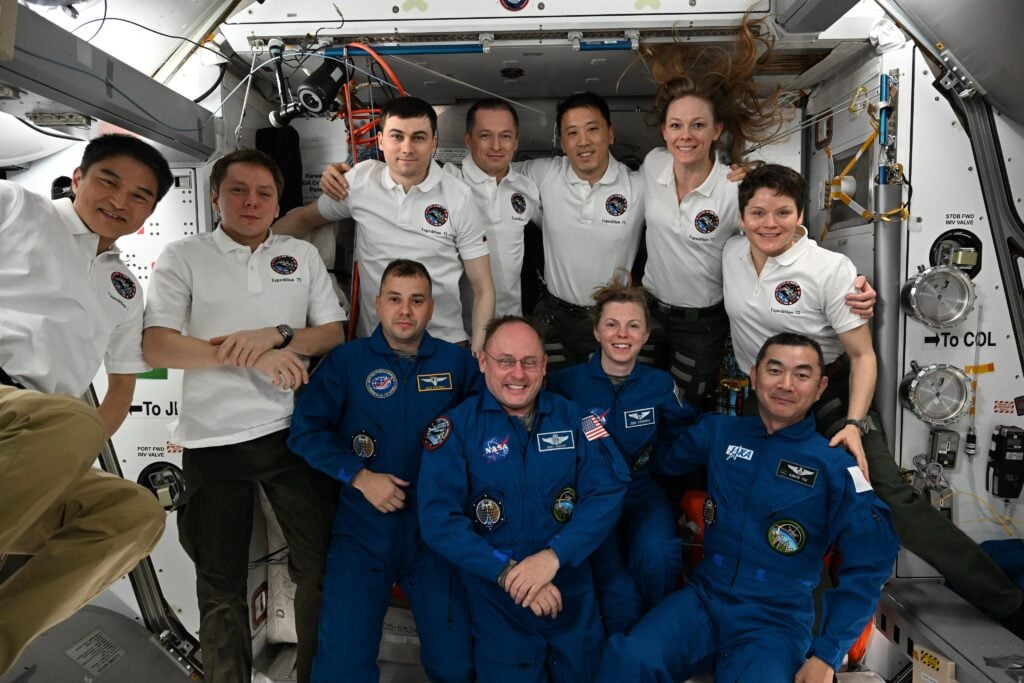
Expedition 73 welcomes NASA’s SpaceX Crew-11 mission aboard the International Space Station. In the front from left are, Crew-11 members Oleg Platonov, Mike Fincke, KE5AIT, Zena Cardman, KJ5CMN, and Kimiya Yui, KG5BPH. In the back are, Expedition 73 members Takuya Onishi, KF5LKS, Kirill Peskov, Alexey Zubritsky, Sergey Ryzhikov, Jonny Kim, KJ5HKP, Nichole Ayers, KJ5GWI, and Anne McClain. (Photo credit: Nichole Ayers @Astro_Ayers and NASA)
The crew is well trained for its space research program and will soon begin investigating a wide variety of microgravity phenomena to gain insights only achievable in space. They will explore manufacturing high quality stem cells, alternatives to antibiotics to treat bacterial infections, cell division in plants to promote space agriculture, and more.
NASA astronauts Anne McClain and Nichole Ayers, KJ5GWI, along with JAXA astronaut Takuya Onishi, KF5LKS, and Roscosmos cosmonaut Kirill Peskov are helping their new crewmates get up to speed with living and working on the orbital lab. NASA’s SpaceX Crew-10 crewmates also will be going home this week aboard another Dragon spacecraft completing a five-month mission. During their stay in space, the crew studied space-caused mental and physical changes in astronauts, blood flow from the brain to the heart, future lunar navigation techniques, and more.
The homebound foursome has spent the last two weeks gathering personal items and cargo for loading inside Dragon. Over the next couple of days, Crew-10 will also pack critical research samples stowed in portable science freezers inside Dragon for retrieval and analysis back on Earth. During the final cargo-packing and scientific sample-stowing duties, the crew will also review departure procedures before entering Dragon and undocking.
NASA astronaut Jonny Kim, KJ5HKP, and Roscosmos cosmonauts Sergey Ryzhikov and Alexey Zubritsky will continue their mission aboard the station and conduct their complement of space research until December. The trio have been assisting with the crew swap activities as Kim helped Fincke learn to work out on the advanced resistive exercise device. Ryzhikov showed the Crew-11 foursome the location of emergency hardware and how to use NASA and Roscosmos station hardware. Zubritsky helped Peskov as he tested the lower body negative pressure suit that may counteract space-caused head and eye pressure and help crews adjust quicker to the return to Earth’s gravity.
[ANS thanks NASA for the above information.]
ARISS NEWS
Amateurs and others around the world may listen in on contacts between amateurs operating in schools and allowing students to interact with astronauts and cosmonauts aboard the International Space Station. The downlink frequency on which to listen is 145.800 MHz worldwide.
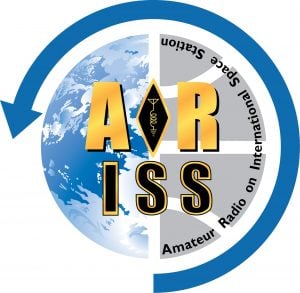
N. Sultanov International Aerospace School, Republic of Bashkortostan, Russia, direct via TBD
The ISS callsign is presently scheduled to be RSØISS.
The scheduled crewmember is Sergey Ryzhikov
The ARISS mentor is RV3DR
Contact is go for Monday 2025-08-11 07:45 UTC
The crossband repeater continues to be ACTIVE (145.990 MHz up {PL 67} & 437.800 MHz down). If any crewmember is so inclined, all they have to do is pick up the microphone, raise the volume up, and talk on the crossband repeater. So give a listen, you just never know.
The packet system is also ACTIVE (145.825 MHz up & down).
Ham TV is CONFIGURED for scheduled digital amateur television operations (2395.00 MHz down)
As always, if there is an EVA, a docking, or an undocking; the ARISS radios are turned off as part of the safety protocol.
Note, all times are approximate. It is recommended that you do your own orbital prediction or start listening about 10 minutes before the listed time.
The latest information on the operation mode can be found at https://www.ariss.org/current-status-of-iss-stations.html
The latest list of frequencies in use can be found at https://www.ariss.org/contact-the-iss.html
[ANS thanks Charlie Sufana, AJ9N, one of the ARISS operation team mentors for the above information]
AMSAT Ambassador Activities
AMSAT Ambassadors provide presentations, demonstrate communicating through amateur satellites, and host information tables at club meetings, hamfests, conventions, maker faires, and other events.
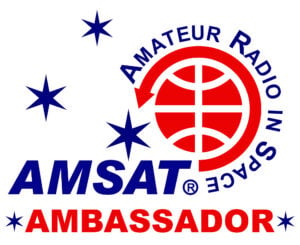
AMSAT Ambassador Clint Bradford, K6LCS, writes: “There’s no salary. There’s no expense report to hand in to anyone. We just volunteer because we happen to really, REALLY like this aspect of this magnificent hobby. I gave my 183rd “Work the Easy Satellites” presentation last night to a great club in Minnesota. The Maple Grove Radio Club has been around almost FIFTY years – and have been an ARRL Affiliate Club almost as long. From the club president: ‘A big thanks to you Clint and Karen for the presentation tonight, it was wonderful and I appreciate you taking the time on your birthday to present to our club … I know we have a lot of members interested in satellite … I can’t wait to get more interested in working satellite, our club should probably fire up a tape measure antenna lab session to get a bunch of members making antennas and on the air.'”
August 16-17, 2025
Huntsville Hamfest 2025
Von Braun Center South Hall
700 Monroe St. SW
Huntsville, AL 35801
August 21-24, 2025
Northeast HamXposition (HamX) & New England ARRL Convention
Best Western Royal Plaza & Trade Center
181 Boston Post Road W
Marlborough, MA 01752
http://www.HamX.org
W1EME, WD4ASW, WB1FJ
September 6, 2025
Greater Louisville Hamfest
Paroquet Springs Conference Centre
395 Paroquet Springs Drive
Shepherdsville, KY 40165
W4FCL
October 11, 2025
North Star Radio Convention
Hennepin Technical College
9000 Brooklyn Boulevard
Brooklyn Park, MN 55445
https://northstarradio.org/
ADØHJ
October 16, 17, 18, 19, 2025
AMSAT Board of Directors Meeting and 43rd Annual AMSAT Space Symposium & Annual General Meeting
Holiday Inn & Suites Phoenix Airport North
1515 North 44th Street
Phoenix, Arizona 85008
Details at https://www.amsat.org/2025-symposium/
Ambassador Tom Schuessler, N5HYP, writes: “We had a good time showing off Amateur radio satellites at the ‘Moon Day’ space themed STEM event at the Frontiers of Flight Museum at Dallas Love Field back on July 19th. They had 980 people through the doors that day. Although, I know we did not see all of them at our exhibit, those we did had a chance to see and understand who we are and what we do via the Cubesat simulator, Fox, model, visualization of satellite orbits and FM contacts.”
[ANS thanks Bo Lowrey, W4FCL, Director – AMSAT Ambassador Program, for the above information]
Satellite Shorts From All Over
+ Kees Van Oosbree, WØAAE and Nathan Wood, K4NHW and a variety of internet remote operators will be activating the Frying Pan Tower lighthouse (fptower.org), located 32 miles off the coast of North Carolina in gridsquare FM13fl, from August 7 to August 11. The special event callsign for this trip will be K4F/MM. The primary objective is to establish a permanent internet-connected remote station, equipped with a Flex 6400, an end-fed half-wave antenna, and an 80-meter vertical. This remote station will be used by youth operators and serve as a platform for propagation experiments in a saltwater-rich environment. K4F/MM will be active on all bands from 160 to 6 meters, as well as on satellite (both FM and linear) and terrestrial VHF (FM and SSB) throughout the duration of the trip. For information, email W0AAE at [email protected] or on Instagram: https://www.instagram.com/fpthamradio (ANS thanks Kees Van Oosbree, WØAAE, for the above information.)
+ Ham Radio Prep is offering an online course, “Satellite and Space Operations” at an “Early Bird Special” price of $59 US if enrolled by August 15. See https://hamradioprep.com/satellite-and-space-operations/ for details. (ANS thanks Ham Radio Prep for the above information.)
+ NISAR, the $1.5B joint NASA-ISRO (the Indian Space Research Organisation) mission launched last week from India’s Satish Dhawan Space Centre on a GSLV rocket—becoming the first satellite collaboration for the agencies. Carrying a 12-meter-wide antenna on a 9-meter boom, NISAR will map the planet’s surface twice every 12 days with two different SAR bands: L-Band with an instrument from JPL, good at moisture, biomass, and land motion detection, and S-Band from ISRO, good at sensing changes to agriculture, grassland ecosystems, and infrastructure. Combined, these measurements will provide change detection at centimeter resolution and be invaluable for monitoring land motion (earthquakes, landslides, volcanic activity), ice shelves, erosion, as well as forest and wetland ecosystems. NISAR orbits in a 747 km SSO and is expected to generate 80 terabytes of data products per day. (ANS thanks The Orbital Index for the above information. See the complete article at https://orbitalindex.com/archive/2025-08-06-Issue-330/)
Join AMSAT today at https://launch.amsat.org/
In addition to regular membership, AMSAT offers membership to:
* Societies (a recognized group, clubs or organization).
* Primary and secondary school students are eligible for membership at one-half the standard yearly rate.
* Post-secondary school students enrolled in at least half time status shall be eligible for the student rate for a maximum of 6 post-secondary years in this status.
* Memberships are available for annual and lifetime terms.
Contact info [at] amsat.org for additional membership information.
73 and remember to help Keep Amateur Radio in Space!
This week’s ANS Editor, Mark Johns, KØJM
mjohns [at] amsat.org
ANS is a service of AMSAT, the Radio Amateur Satellite Corporation, 712 H Street NE, Suite 1653, Washington, DC 20002
